How to Use Oral Development Tools for Your Baby with Dawn Winkelmann, MS, CCC-SLP
In this episode we're talking about:
- What oral development tools are and how they can help strengthen your baby's mouth
- When to start using pre-feeding and feeding tools with your baby
- How oral development tools can help your baby reach feeding and speech milestones
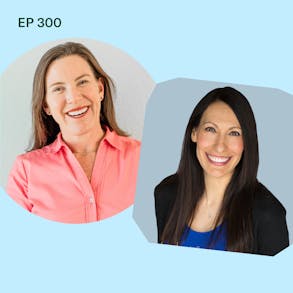
LISTEN TO THIS EPISODE
Episode Description
How strong is your baby’s mouth? Are there exercises or tools you can use to help strengthen your baby’s jaw or help them with tongue elevation or tongue lateralization? In this episode I’m interviewing Dawn Winkelmann, MS, CCC-SLP who is the mastermind behind ezpz’s brand new Oral Development Tools.
Dawn is walking us through the difference between her 3 oral development tools, explaining how and why babies benefit from these tools and some easy tips about when to start implementing and using these as part of your pre-feeding routine, but also when your baby gets started with eating solid food too.
About the Guest
- Dawn Winkelmann, MS, CCC-SLP is a BLW feeding expert and product designer
- She designed the 3 new ezpz Oral Development Tools
- These Oral Development Tools help strengthen your baby’s mouth

Links from this Episode
- Follow Dawn on Instagram @msdawnslp and ezpz is @ezpzfun
- Baby-Led Weaning with Katie Ferraro program with the 100 First Foods™ Daily Meal Plan, join here: https://babyledweaning.co/program
- Baby-Led Weaning for Beginners free online workshop with 100 First Foods™ list to all attendees, register here: https://babyledweaning.co/baby-led-weaning-for-beginners
Other Episode Related to This Topic:

Latest Episodes

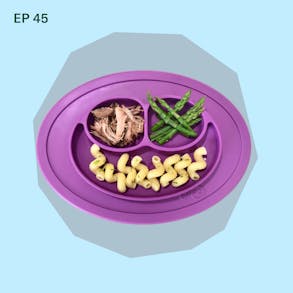
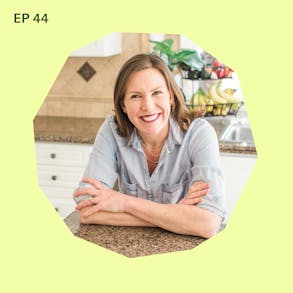
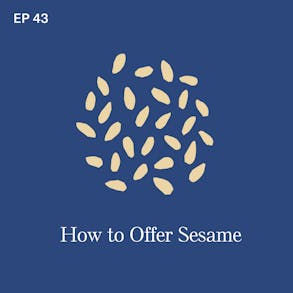
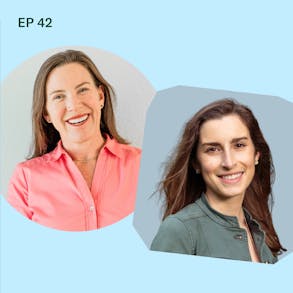
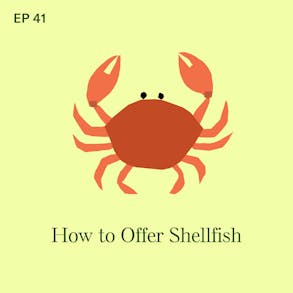
Dawn Winkelmann (1m 25s):
In my clinical work in baby-led weaning and of course in feeding therapy, I found that there's just not appropriate pre-feeding tools in the marketplace out there to help babies learn how to practice their feeding skills, to practice their chewing skills. This is why I design these three oral development tools so that parents can be reassured that they're offering sensory motor devices that stimulate the lips, the tongue, the cheek, the gumline, the jaw. And of course these all help to build tone and strength, which is needed for baby-led weaning and starting solids. These skills can help their baby start solid safely, and then baby can use cold strips of food to ease those gums, right, which is developmentally appropriate.
Dawn Winkelmann (2m 6s):
So these help to kind of prepare pre feeding to get baby ready to actually move into their next developmental stage in feeding.
Katie Ferraro (2m 14s):
Hey there! I'm Katie Ferraro, Registered Dietitian, college nutrition professor and mom of seven specializing in baby-led weaning. Here on the Baby-Led Weaning Made Easy podcast, I help you strip out all of the noise and nonsense about feeding, leaving you with the confidence and knowledge you need to give your baby a safe start to solid foods using baby-led weaning. Well hey guys, welcome back. So How strong is your baby's mouth, and are there like any exercises or tools that you can do to help strengthen your baby's jaw or help them with their tongue elevation or tongue lateralization? And how does all of this oral development stuff overlap with your baby learning how to eat and eventually how to talk?
Katie Ferraro (2m 57s):
Well, my guest today is Dawn Winkelmann. She's a speech and language pathologist. She's an expert in baby-led weaning, a feeding therapist, and Dawn is also the award-winning product designer for the feeding gear brand EZPZ. So EZPZ, makes silicone suction mats and bowls, as well as baby-led weaning utensils and open cups that Dawn helps design and she's the mastermind behind the brand new EZPZ oral development tools. Now, this is a podcast so you can't see them, but when I first saw the EZPZ oral development tools or the ODTs as they're abbreviating them, I was like, wow, these look like nothing else I've ever seen in the feeding or speech space.
Katie Ferraro (3m 37s):
And I can't wait for you guys to hear this interview with Dawn because she's gonna walk us through and tell us all about, well, why should we A, even be using oral development tools with our babies? And then B, how to do that safely. So these new oral development tools from EZPZ, they come in a three pack. So they have the tiny, the mini, and the happy tool and Dawn is gonna take us through each of the tools, explaining the design features and then how they can help your baby developmentally. Plus, she'll be sharing some tips about when you should start implementing and using these as part of either your pre-feeding routine if you haven't started yet, but then also how you incorporate them once your baby does get started eating solid foods with baby-led weaning. So with no further ado, here is Dawn Winkelmann teaching us about how to use oral development tools for your baby.
Dawn Winkelmann (4m 25s):
Oh, thank you so much for having me Katie. It's always a pleasure.
Katie Ferraro (4m 28s):
Alright, before we get started, tell us what's new. Like can you share something about a project that you're maybe working on that's really exciting you?
Dawn Winkelmann (4m 34s):
Yeah, actually it's a little off topic, but I'm working on a feeding and swelling chorus for other pediatric speech language pathologists and get this, it's going to be held on a cruise ship. I'm so excited to present feeding research to my colleagues, but I'm very excited about taking so much to needed.
Katie Ferraro (4m 52s):
Well, you're gonna get outta your basement Dawn? No way.
Dawn Winkelmann (4m 55s):
Yes, and I'm gonna be on a cruise. It's gonna be great. I can't wait.
Katie Ferraro (4m 58s):
Very cool. Is Roberto going too?
Dawn Winkelmann (5m 0s):
Yes, he is.
Katie Ferraro (5m 1s):
Awesome, awesome. Well, I know you recently designed a new product called the EZPZ Oral Development Tools or ODTs for short. You're known for your really innovative infant feeding gear designs. Can you tell us a little bit about these tools and how can they help parents who are using a baby-led weaning approach?
Dawn Winkelmann (5m 17s):
Oh, thanks. Yeah. The oral development tools actually consist of three sensory motor devices that I designed to help babies practice their pre-feeding, their munching, their biting, their chewing and their eating skills. The key here with these tools is that they are all baby-led, which you're gonna love Katie because that means that baby has the ability to put these tools into their own mouth. So they all have built-in handles specifically for babies chunky hands, and so they can have that control in order to actually help to develop these pre-feeding skills.
Katie Ferraro (5m 52s):
So did you design the EZPZ oral development tools to be used at mealtime or outside of mealtime or a combination of both? How does it work?
Dawn Winkelmann (5m 60s):
Yeah, so you can actually use them before, during, or after mealtime. For example, I use them with babies before mealtime to help prepare them for the sensory and motor movements needed to eat and drink. So parents feel free to place these tools in the refrigerator to kind of get cooled and then offer these tools like five minutes before a meal to kind of help wake up your baby's mouth before they start eating, but I also use them during mealtime. So for example, you can dip these tools into breast milk or formula and kind of offer that to baby. I also use the mini development tool a lot and I'll talk about each one of the tools here in just a second, but the mini developmental tool, because it has eye depressions, it's a a smiley face and so, it has these little eye depressions that I use to hold purees like yogurt and hummus.
Dawn Winkelmann (6m 47s):
And then this is a reminder that you know to parents that food doesn't always have to be on a traditional spoon, right? It can be placed on one of these tools and allow baby to just kind of eat off of other objects. And then I also use the Happy Development tool to help baby learn how to practice sucking. So it is one of my prerequisite skills from my straw drinking program that baby has to master before we even think about introducing a straw cup. We want baby to actually suck some puree either off of a finger or off of a tool like the Happy Development Tool.
Katie Ferraro (7m 19s):
So Dawn, I've had the opportunity to review the new oral development tools as usual. They're beautiful. They're definitely very different looking from anything that EZPZ has put out. So there's three separate tools. Could you tell us a little bit about them all kind of in the same product and how they work separately, but also together?
Dawn Winkelmann (7m 35s):
The oral development tools consists of three tools, the Tiny Development tool, the Mini Development tool, and the Happy Development tool. So the Tiny Development tool has sensory bumps at the tip of the tool to help stimulate lip closure, which is really good to help with open cup drinking. And it also helps to decrease drooling too, so the baby gets stimulated on the lips and helps to really swallow their saliva. And the tool has an opening in the center, which also allows for tongue elevation to help improve swallowing as well as to practice tongue elevation movements for speech sounds such as the T sound and the D sound. So for all those dads who are listening right now, if you want your baby to say dada before mama, you wanna grab this tool.
Dawn Winkelmann (8m 21s):
And then the Mini Development tool was developed to facilitate jaw strength for chewing and swallowing skills. So, it has a smiley face design with some sensory bumps around the tool. And those sensory bumps provide texture and tactile input to the mouth and the shape encourages jaw stabilization and lip spreading movements for feeding, but also for speech sounds too, like the E sound for please or mommy or daddy. So these tools really have a whole bunch of different ways that we can kind of use them for feeding and speech. And the Happy Development tool was designed to be about the length and thickness of an adult pinky finger.
Dawn Winkelmann (9m 4s):
And as you know, Katie and your listeners know, this is the size and shape that can actually help facilitate munching and chewing skills, but it also helps to stimulate tongue lateralization for eating and preparing the mouth for a strong swallow. And I use the tip of the tool to encourage lip rounding movements and also to help prepare for straw drinking like I was talking about earlier. So these tools, again, the combination of the three really provide baby with a variety of mouth experiences to help with speech development and feeding development as well.
Katie Ferraro (9m 36s):
And one thing I know you've always reinforced when we've done so many different interviews and workshops and teachings together throughout the years is that the feeding skills your baby are working on right now are important for all the reasons we know why, but that the feeding skills your baby is mastering, they actually come before the speech skills, which will be next. So a lot of parents are very hyper-focused on what their baby's doing from a feeding standpoint, sometimes failing to recognize like, oh my gosh, the next thing up is speech, but these aren't two mutually exclusive skill sets because as your baby is learning how to eat, Dawn's always teaching us that that's actually in turn gonna be helping your baby. If you're going in the right order with the skills and using the right tools can actually help with their speech development as well and I always think that's so fascinating.
Katie Ferraro (10m 17s):
Sometimes people say it speaks to language pathologists, what do they have to do with feeding? Like, oh my gosh, it's so related because of what's going on in your baby's mouth. So would you say these products not only help with feeding, do they also help with speech?
Dawn Winkelmann (10m 26s):
Absolutely. And it's really important too, and I love how you just explained that to the families that is in your audience is because these skills sets kind of compliment each other, right? So if we're working on the lip closure with open cup drinking or using the oral development tool to be able to help with that lip closure, that lip closure is also for the M sound. Mm, right? When babies are eating, mm, they put their lips together or to say, mama, these things happen at the same time. You'll find that as your baby starts to get better with their feeding skills, their speech and their babbling is just going to skyrocket and it's because what are we doing with feeding?
Dawn Winkelmann (11m 8s):
We are providing baby with a lot of sensory opportunities to be able to stimulate the entire mouth, to be able to get ready to utilize that breath support, to actually vocalize and communicate their wants and needs.
Katie Ferraro (11m 23s):
Hey, we're gonna take a quick break, but I'll be right back.
Katie Ferraro (12m 32s):
So Dawn, is a teether different from your oral development tools and if so, how are they different?
Dawn Winkelmann (12m 37s):
Yeah, so generally speaking, and this is very general, but pacifiers, teethers, those products help soothe and organize a baby sensory system and as a pediatric feeding and swallowing specialist, of course I use these products and recommend them for young babies. In my clinical work in baby-led weaning and of course in feeding therapy, I found that there's just not appropriate pre-feeding tools in the marketplace out there to help babies learn how to practice their feeding skills, to practice their chewing skills. This is why I design these three oral development tools so that parents can be reassured that they're offering sensory motor devices that stimulate the lips, the tongue, the cheek, the gum line, the jaw.
Dawn Winkelmann (13m 18s):
And of course these all help to build tone and strength, which is needed for baby-led weaning and starting solids. These skills can help their baby start solid safely and then baby can use cold strips of food to ease those sore gums, right? Which is developmentally appropriate. So these help to kind of prepare pre-feeding to get baby ready to actually move into their next developmental stage in feeding.
Katie Ferraro (13m 42s):
So Dawn, you described these products, you keep saying pre-feeding tools. What do you mean by that?
Dawn Winkelmann (13m 47s):
So pre-feeding is a term coined by the amazing Marsha Dunn Klein and Dr. Suzanne Evans Morris. They really coined that term to really tell us like what does a baby need to do before feeding? I describe pre-feeding to parents as the skills their baby can practice to prepare them for eating and drinking and mastery of these skills, demonstrate their baby's readiness to eat and drink safely and successfully. And I designed the EZPZ oral development tools to be those devices that parents can use to help their baby achieve these critical skills for mealtime development.
Katie Ferraro (14m 21s):
And Dawn, Marsha was on our podcast again recently back in episode 290. She talked a little bit more about pre-feeding skills and what we can do before baby begin solid foods, but it's just so fabulous that now we actually have tools to implement along with some of those practices that she was recommending because you know, people love to hear from feeding therapists, but if your baby is not in feeding therapy, you sometimes don't have access to these things, which even babies who neurotypical babies who might not need feeding therapy can still benefit from them. And are these tools like for the general lay population as well? Or is it just to be used in a feeding therapy setting?
Dawn Winkelmann (14m 51s):
Oh no, this is for all babies because all babies need to master these skills, right? And parents are constantly asking, how can I help my baby? What can I do to prepare them? I'm nervous about choking. I don't know how to be able to get my baby ready for starting solids. That is what I kept hearing in my private practice. And really not being able to recommend things to families is really discouraging as a feeding therapist. And I think that's what I love about working for EZPZ is that I actually get to design the products that are needed for all babies to be able to be successful, for all parents to feel like they know what they can do for their baby and really make, you know, mealtime more enjoyable and pleasurable for families in general.
Katie Ferraro (15m 36s):
At what age do you recommend parents start utilizing these oral development tools Dawn?
Dawn Winkelmann (15m 40s):
So, I put the age on the packaging as three months of age. And the reason why I did that is because, you know, babies really start changing their oral development at the four month mark, but we really need to start to introduce these tools around that three month mark when babies are reaching and you know, parents are struggling with tummy time and they're like, what do I need to do to be able to, you know, get my baby to actually, you know, sit there and do tummy time? Well we need to be able to offer tools for babies to put into their mouth, let them be able to explore. It's really important for babies to have all of these different abilities with their tongue and their lip and their jaw and bringing their hands to their mouth.
Dawn Winkelmann (16m 22s):
These are all those pre feeding skills that are necessary for a baby to be successful with baby-led weaning, once we get them into the highchair and start solids at six months. These are the skillsets that we need to be able to really provide and give an environment for a baby to be successful. So at the three month mark, I start to offer these tools to babies and really, you know, hone in on those pre-feeding opportunities for them.
Katie Ferraro (16m 49s):
And are they sequenced? Like I know with the EZPZ feeding gear, we do the tiny products for babies for the early eaters and then we eventually graduate to Mini and then Happy. Are these tools designed for different ages? Can they be used simultaneously? Is it maybe a little more nuanced than that?
Dawn Winkelmann (17m 4s):
Yeah, so I label them as the tiny, the mini and the happy tools to just give parents a great range to be able to start with all of EZPZ products. They are designed for ages and stages, but the really unique thing about pre-feeding tools is that, you know, a baby could actually want to stimulate the back of their gum line, right? We wanna be able to have something for that. Or maybe they want to really strengthen the sides of their lips. You can offer and it's fun to watch. You can offer all three and kind of be fascinated by which one your baby picks up. You know, at one day your baby really wants to focus on the front of their mouth, whereas the next day they wanna focus more towards the back of the mouth.
Dawn Winkelmann (17m 47s):
And the essential thing is again, having these tools be baby-led, right? What does baby need? What does baby want to experience at that time? What does baby want to explore? When we start to really look at how babies use tools like this, then we really can hone in on those subtle nuances that we see when babies in the highchair and looking at solids and maybe babies just more interested in observing the foods at first, right? We always say, you know, you're not expecting your baby to eat all the food in the first couple weeks of baby-led weaning, right? We get to really see those nuances and they're very, very subtle.
Dawn Winkelmann (18m 28s):
If parents and therapists have the time to have these pre feeding opportunities and really look at how baby likes to explore their world, it really sets us up as feeders to really know what our baby is going to do, really know how babies are going to explore. And sometimes that information gives us a lot of really good critical problem solving for us to be able to start off with certain foods, right? To maybe want to have something that has a little bit more bumpiness to it because you know, they use oral development tools and really kind of like those bumps. Well then maybe we're gonna use a crinkle cutter and offer foods with a crinkle cutter because our baby really likes that texture.
Dawn Winkelmann (19m 12s):
So using these tools early in the pre-feeding experience is not only beneficial for a baby, but beneficial for caregivers as well so that we can really see how baby wants to explore the world. And also is, you know, specifically see how are the lips moving? Is the tongue moving up? You know, is baby able to manage their saliva? Does baby like to put things onto their gum line? And that's gonna give us a lot of information to, you know, get ready to start solids a couple months later.
Katie Ferraro (19m 39s):
Hey, we're gonna take a quick break, but I'll be right back.
Katie Ferraro (20m 23s):
And Dawn, what material did you choose to make these oral development tools out of and why?
Dawn Winkelmann (20m 28s):
Yeah, so they're all made out of food grade silicone. So it's all 100% food grade silicone. You can put 'em in the dishwasher, you can hand wash them and you can put 'em in the refrigerator to get them a little bit cold. So we wanted to have something that was safe and toxic free and also provide baby with a wonderful way to actually kind of go through our product line, right? So that's what's really exciting about two of the tools, the tiny and the happy tools have the spoon handle of the tiny spoon. So if you start using the oral development tools at three months of age, four months of age, five months of age, at six months of age when your baby starts solids, they're already gonna be ready for that spoon handle.
Dawn Winkelmann (21m 16s):
They've already had, you know, three months of practice with that. With our mini tool, which is a smiley face, which looks very similar to our mini mat. Well they've already had that kind of exposure to that facial design and so, it really helps to make a happier mealtime. So it's a wonderful way to kind of just start off your baby in the EZPZ line and really see that success as you go through it.
Katie Ferraro (21m 41s):
And you made a good point. Parents are always asking, you know, what can I do to get ready? And I just wanna reiterate what Dawn said numerous times, but we're waiting until your baby is six months of age plus showing the other reliable signs of readiness to eat before we start anything except infant milk, right? Breast milk or formula. Cause as we know, babies are not safe to swallow anything except infant milk prior to that, plus from a nutritional standpoint, they don't need it, but parents get anxious and they wanna know, well what can I do ahead of time? Or how can we practice? How can we get ready? These pre feeding skills that we've been talking about and now having these oral development tools are certainly safe for you to be implementing prior to when you start solid foods. So Dawn, where can our audience go to learn more about these new EZPZ oral development tools that you created as well as some of your other work?
Dawn Winkelmann (22m 20s):
They could go to ezpzfun.com and of course your listeners should use your code, which is KATIE10 for a 10% off all of our pre-feeding gear and starting solids gear. And they can also follow me on social media, which is @Msdawnslp.
Katie Ferraro (22m 36s):
Well, Dawn, thank you so much. I'm so excited about these tools and thank you for always creating solutions to products that haven't existed before. You're, you're creating entirely new product lines and you're so creative, they're so innovative and they're so important for helping our babies reach those all important feeding milestones and then also eventually their speech milestones. So thank you for all the work that you do for all of us here in the Infant feeding world.
Dawn Winkelmann (22m 58s):
Well, thank you so much, Katie.
Katie Ferraro (22m 60s):
Well, I always love an opportunity to chat with Dawn. I hope you guys enjoyed that interview. I know it's a little bit hard to describe like the shape and features of these new tools in a podcast. I think Dawn did a wonderful job, but you really have to see them with your own eyes as well. So I will go ahead and link to the all the pictures and the descriptive materials that kind of explain the design features of the EZPZ Oral Development tools. That'll be, those are the products that EZPZ just launched. They're available for purchase now if you wanna check them out. I'll put them all in the show notes page for this episode, which you can find at BLWpodcast.com/300. Three 0 0, episode 300. Very fitting that we had Dawn on. She's actually the guest we've had on the most in the podcast and I think she brings such a unique set of just skills and information and now amazingly designed products to us.
Katie Ferraro (23m 48s):
And I'm so grateful for our friendship, but I'm also really grateful for the products that she designs that make our lives easier every day. And I'm always learning things from Dawn. She mentioned it in the episode, but I am an affiliate for EZPZ. So if you guys wanna check out any of their products, my affiliate discount code, KATIE10 always works for 10% off at EZPZ. So Dawn designed their tiny cup, which is their open cup, and she was on the podcast. I know people sometimes are like, you have so many episodes, I can't find anything, but if you're interested in like the open cup stuff, Dawn was on the podcast a while back when she launched the EZPZ Straw Cup system in episode 101. It was called Straw Cup versus Open Cup, Which Comes First? That's another really good episode to listen to if you guys are interested in learning about like, okay, which kind of product should my baby be using at which age and stage of feeding.
Katie Ferraro (24m 33s):
Dawn's got it all lined out in that episode, and I'll link to all of her other previous episodes plus all the EZPZ stuff. That'll all be in the show notes. Again, that's at BLWpodcast.com/300, and I wanna say a special thank you to our partners at AirWave Media. If you guys like podcasts that feature food and science and using your brain, AirWave Media has some wonderful podcast opportunities, check them out. Check us out online at BLWpodcast.com and thank you so much for listening. See you next time.

The Program Baby-Led Weaning with Katie Ferraro
A step-by-step digital program for starting solid foods safely and navigating the original 100 FIRST FOODS™ meal plan with baby-led weaning.
 EXPERT-LED, PROVEN APPROACH TO EATING REAL FOOD
EXPERT-LED, PROVEN APPROACH TO EATING REAL FOOD CONCISE VIDEO TRAININGS TO MASTER BABY-LED WEANING
CONCISE VIDEO TRAININGS TO MASTER BABY-LED WEANING 100 FIRST FOODS DAILY MEAL PLAN WITH FOOD PREP VIDEOS
100 FIRST FOODS DAILY MEAL PLAN WITH FOOD PREP VIDEOS
Baby-Led Weaning for Beginners Free Workshop
Is your baby ready to start solid foods, but you’re not sure where to start? Get ready to give your baby a solid foundation to a lifetime of loving real food…even if you’re feeling overwhelmed or confused about this next stage of infant feeding.
Get baby-led weaning recipes and tips delivered to your email inbox.

